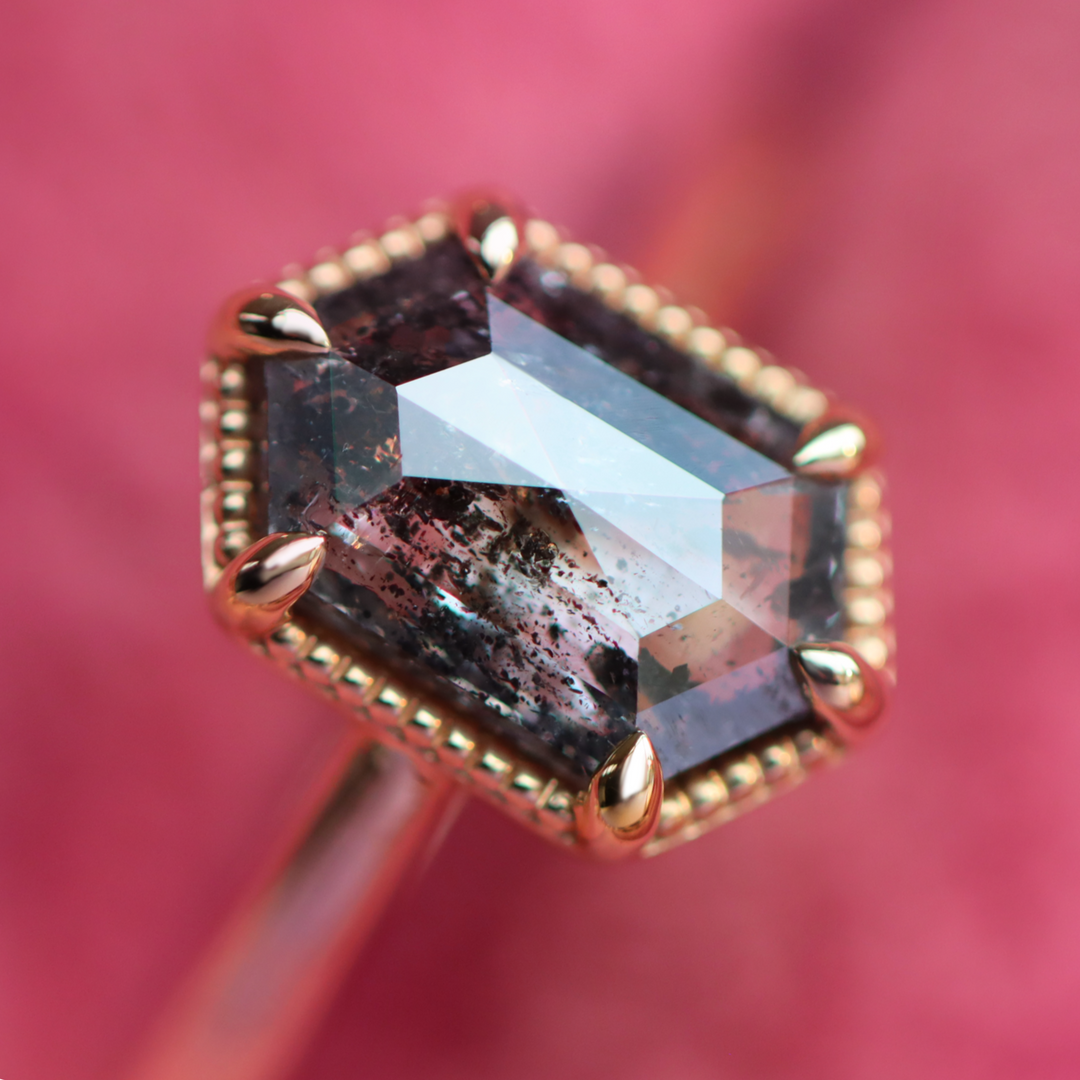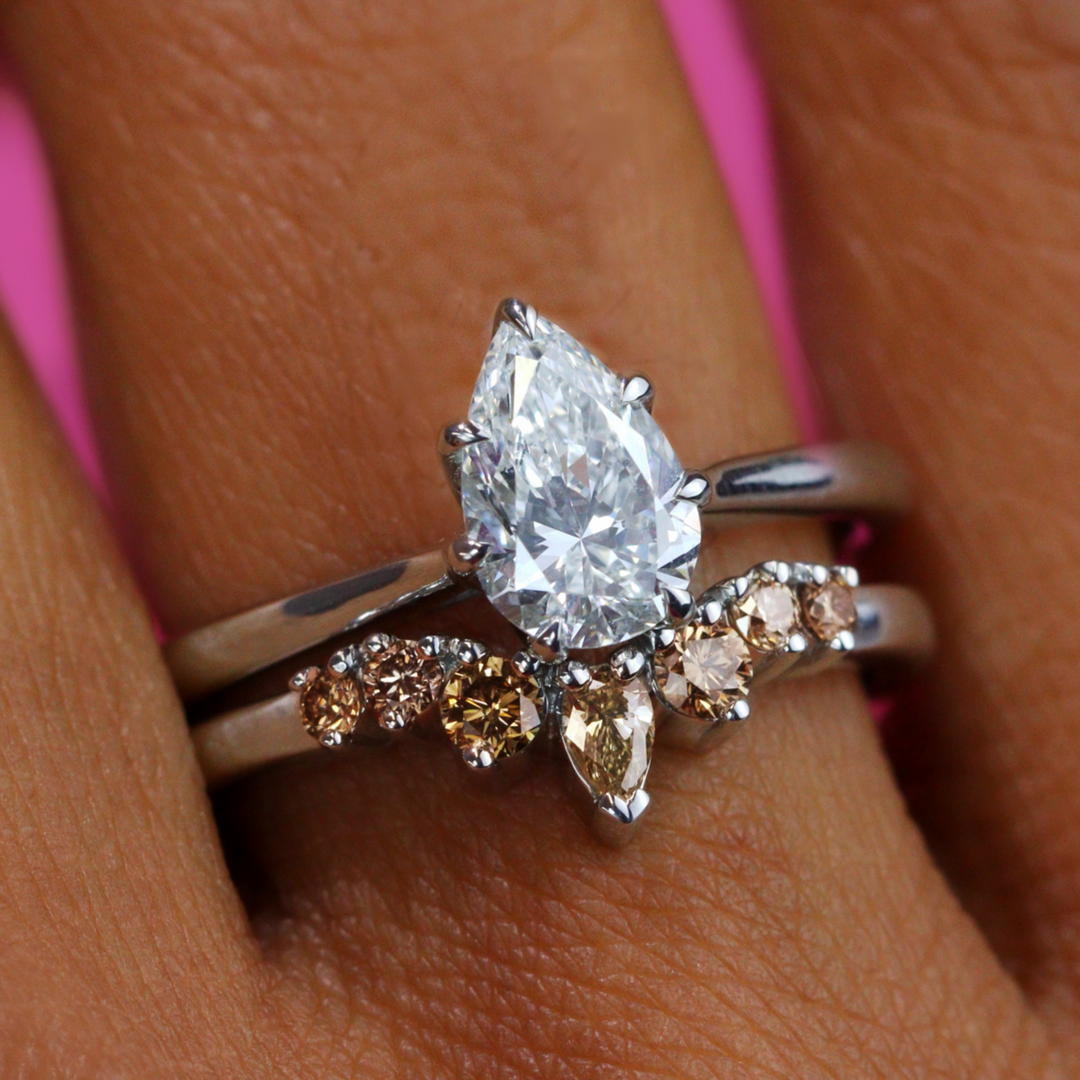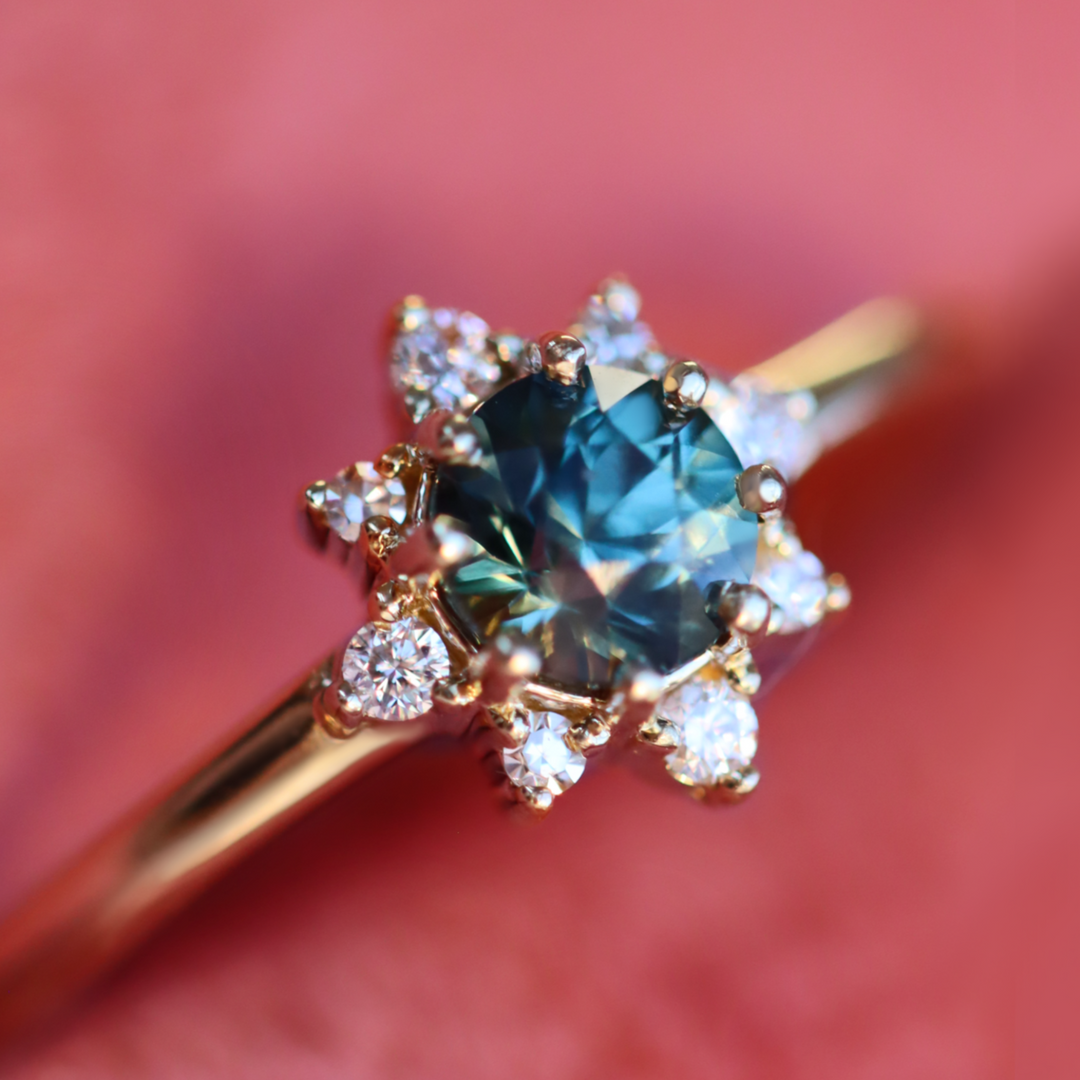WHAT IS A GREY DIAMOND?
Grey diamonds fall into two categories - Fancy Grey Diamonds and Included / Salt and Pepper Grey Diamonds.
Fancy Grey Diamonds may be an unconventional diamond colour but they hold a pronounced advantage over mainstream fancy colours because they are generally affordable for being more widely available. Unlike other popular fancy coloured diamonds such as pink or orange, natural fancy grey diamonds consist of neutral colour in a wide range of grey hues. Other fancy colours can also couple with grey to form either a grey diamond with overtones or secondary colour modifiers. Blue is usually the most common overtone found in grey diamonds.
Colour

Natural grey diamonds derive their colour from a hydrogen or boron defect that makes the stones absorb equal quantities of all light wavelengths.
Fancy grey diamonds occupy a wide scope of tones, ranging from lighter-hued pewter to deeper-hued graphite. A grey diamond can lean either cool or warm depending on the kind of secondary colour it is found with – those that are paired with blue or green are usually cool-toned and those that are paired with browns or yellows will be warm-toned.
Intensity
Fancy grey diamonds are assessed according to intensity of colour, or a combination of saturation and tone. The further along this spectrum you go, the richer and more intense the grey is to be seen in the diamond.

Tone
Tone refers to the lightness or darkness of a grey diamond, and the continuum in between. GIA grading does not make a distinction in tones, but to the eye, a stone with darker tones may appear more intense in colour.
Salt and Pepper Diamonds get their name from the inclusions that are present in the stone. The salt refers to the white inclusions and the pepper the black. The same physical makeup as traditional white diamonds, they are the hardest material known to man.

How does the diamond become included?
Diamonds are formed in the Earth's mantle, up to 160 kilometres below our feet. They are formed by carbon atoms coming together under increased heat temperatures and pressure. They are bought closer to the surface through volcanic eruptions.
As the crystals form they sometimes trap other minerals inside. These are known as inclusions and often appear as flecks or colours running through the stones.
Each salt and pepper diamond has a natural, organic feel and is totally unique. Some sparkle, some are cloudy, some have their own worlds swirling around inside, whereas others are almost dotty. They have an understated elegance and are generally more affordable than white diamonds, meaning you can get a bigger stone for your budget.




